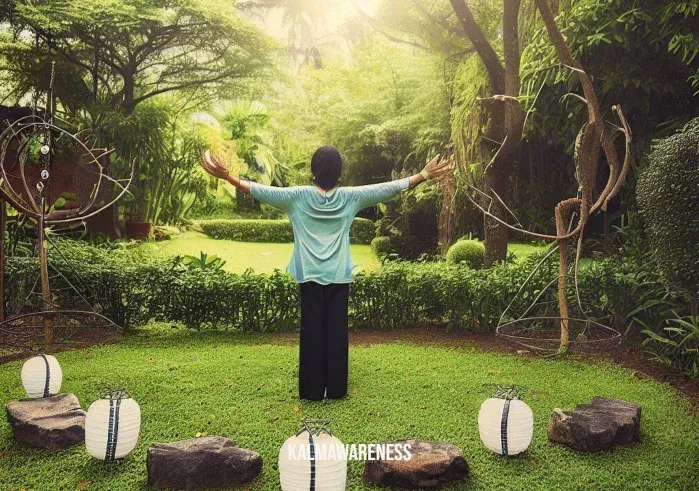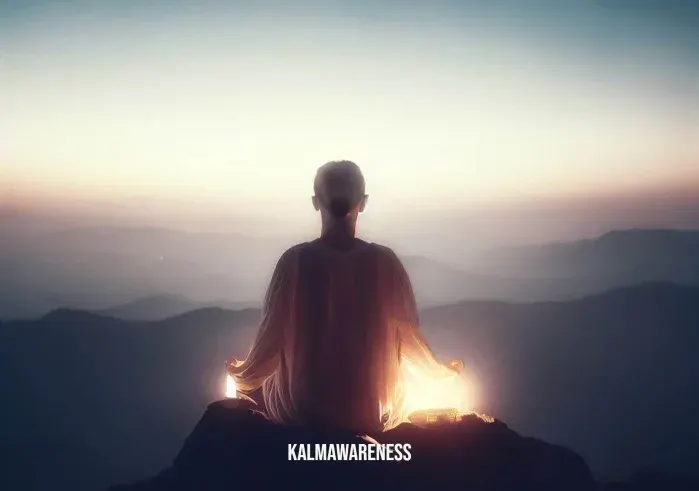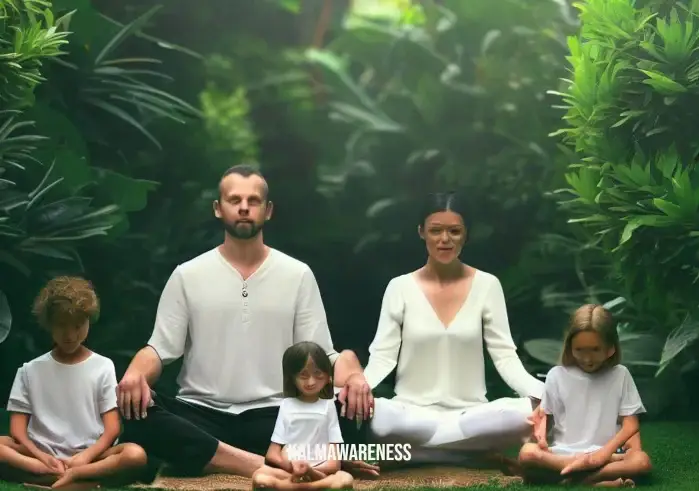Guided Meditation for Emotional Healing: The Path to Inner Peace and Release
Emotional healing is a lifelong journey that demands patience, perseverance, and practice. One such practice that has shown promising results in emotional healing is guided meditation. This comprehensive guide introduces you to the remarkable world of guided meditation for emotional healing, sharing insights on how it can help you navigate through emotional turbulence, trauma, and everyday stressors. We explore various meditation techniques that enhance healing, promote peace, and encourage emotional release.
What is Guided Meditation for Emotional Healing?
Guided meditation for emotional healing is a mindfulness practice focused on using meditation to address and heal emotional distress. It is an approach that helps individuals explore their emotions in a safe, non-judgmental environment, promoting self-awareness and resilience. Guided meditation may involve imagery, breathwork, mindfulness, or mantra techniques to facilitate this healing journey.
Take, for instance, EMDR (Eye Movement Desensitization and Reprocessing) meditation, a powerful technique that has shown significant results in emotional healing. It’s a therapy type that uses eye movements to help process traumatic memories and reduce their long-term effects. Another powerful approach is the Emotional Awareness Meditation, a practice that guides individuals to be more in tune with their feelings, helping them recognize, express, and manage their emotions better.
“Healing takes time, and asking for help is a courageous step.” – Marsha Sinetar.
Why Practice Guided Meditation for Emotional Healing?
In an era where mental and emotional health is finally receiving the recognition it deserves, guided meditation for emotional healing is becoming increasingly popular. But why should you consider incorporating it into your wellness routine?
Emotional Release and Inner Healing
Meditation provides a safe space for us to encounter our emotions head-on, paving the way for profound inner healing. Practices like Emotional Release Meditation and Energy Healing Meditation allow individuals to confront, understand, and release the emotions that may have been suppressed or ignored.
Developing Emotional Intelligence
Guided meditation for emotional healing aids in developing emotional intelligence, the ability to identify and manage one’s emotions and understand others’. It fosters self-awareness, empathy, and effective interpersonal communication, enhancing personal and professional relationships.
Coping with Trauma and Stress
Certain meditation practices, such as Foot Chakra Clearing or Floating Meditation, can help manage the stress and trauma that often accompany emotional distress. They serve as effective coping mechanisms, providing a sense of peace and calm in the face of life’s challenges.
Boosting Physical Health
The emotional turmoil doesn’t only affect the mind; it can also manifest physically. Practices like Feeling Sick After Meditation offer insights into how our emotions can impact our physical well-being and how we can use meditation to address these manifestations.
The healing power of meditation is indeed vast, but it’s important to remember that it’s not a cure-all. It’s a tool, a path that can lead you toward healing and self-discovery.
Please continue to the next part of this comprehensive guide, where we delve deeper into various guided meditation techniques for emotional healing. Learn how practices like the EMDR Spiral Technique, Color Visualization Meditation, and Connecting to Source Meditation can aid your healing journey. We’ll also look at how guided meditation can help with specific issues such as fertility, detachment, and forgiveness.

Discovering the Techniques: Guided Meditation for Emotional Healing
There are numerous techniques associated with guided meditation for emotional healing. Each of these methods offers a unique perspective and employs a different set of strategies to aid in emotional recovery and self-realization. Let’s delve deeper into some of these approaches, with special focus on the EMDR Spiral Technique, Color Visualization Meditation, and Connecting to Source Meditation.
EMDR Spiral Technique
The EMDR Spiral Technique is a powerful tool used in EMDR therapy to aid in processing traumatic memories and reducing their long-term effects. This technique harnesses the brain’s adaptive capabilities, helping individuals transform negative beliefs and emotions into positive, empowering ones.
The EMDR Spiral Technique incorporates bilateral stimulation, which involves alternately stimulating the left and right sides of the brain. This can be done through eye movements, sounds, or touch, making it an effective technique for guided meditation for emotional healing.
Color Visualization Meditation
Color Visualization Meditation is another popular technique employed in guided meditation for emotional healing. This approach involves visualizing different colors associated with specific emotions or energy centers (chakras) in the body.
For example, red is often associated with feelings of strength and passion, while blue is linked to calm and peace. Visualizing these colors during meditation can help individuals understand and navigate their emotional landscape better, leading to emotional release and healing.
Connecting to Source Meditation
Connecting to Source Meditation is a spiritually inclined practice that encourages individuals to establish a connection with the universe, higher power, or whatever they perceive as the source of life energy.
This technique offers a profound sense of unity and belonging, which can greatly contribute to emotional healing. It instills a feeling of peace, love, and understanding, promoting self-compassion and fostering emotional intelligence.
Now, let’s delve into the specifics of these techniques:
| Technique | Description | Benefits |
|---|---|---|
| EMDR Spiral Technique | Involves bilateral stimulation through eye movements, sounds, or touch. | Promotes processing of traumatic memories, encourages positive beliefs and emotions. |
| Color Visualization Meditation | Involves visualizing different colors associated with specific emotions or energy centers in the body. | Enhances understanding of emotions, promotes emotional release and healing. |
| Connecting to Source Meditation | Encourages connection with the universe or higher power. | Fosters a sense of unity and belonging, enhances emotional intelligence, instills peace and love. |
Understanding the nuances of these techniques is the first step in harnessing their healing potential. It’s important to approach each practice with an open mind and heart, embracing the journey towards emotional healing.
But guided meditation isn’t the only path. Join us in the next part of our series where we explore how practices like Forest Bathing Meditation, Global Meditation, and Grace Meditation offer unique perspectives and methods for healing. We will also look at meditation practices designed to foster forgiveness and resolve old issues. Explore how these practices, along with the power of guided meditation for emotional healing, can enrich your healing journey.

Exploring the Realm of Meditation: A Journey towards Emotional Healing
While guided meditation for emotional healing often entails focused techniques and methods, it’s important to note that its essence is universal. Meditation, in all its forms, cultivates mindfulness, compassion, and self-awareness, fostering emotional resilience and inner peace. Let’s explore how different meditation practices such as Forest Bathing Meditation, Global Meditation, and Grace Meditation contribute to emotional healing.
Forest Bathing Meditation
Inspired by the Japanese practice of Shinrin-Yoku, or “forest bathing,” Forest Bathing Meditation encourages us to immerse ourselves in the natural world. By attuning to the sights, sounds, and smells of the forest, we can foster a deeper connection with the earth, cultivating mindfulness, tranquility, and emotional healing. As famous naturalist John Muir once said, “In every walk with nature, one receives far more than he seeks.”
Global Meditation
Global Meditation, meanwhile, promotes collective healing. It involves individuals from around the globe meditating simultaneously, reinforcing a sense of community and interconnectedness. As Buddhist monk Thich Nhat Hanh beautifully articulates, “When we practice mindful breathing, we become truly present. If we are here, life is also here.”
Grace Meditation
Lastly, Grace Meditation encompasses the practice of connecting with divine love and wisdom. It serves as a reminder of the boundless compassion and grace that permeates our existence. Grace meditation enables us to surrender our emotional burdens and accept healing. As the revered spiritual teacher, Eckhart Tolle, teaches us, “Surrender is the simple but profound wisdom of yielding to rather than opposing the flow of life.”
Alongside these different meditation practices, it’s important to acknowledge the role of forgiveness in emotional healing. Both Forgive Yourself Meditation and Forgiveness Meditation foster emotional release and encourage us to let go of resentment and guilt.
In the next part of our article series, we will focus on how to practically implement these meditation practices into your daily routine. We’ll also explore the benefits and challenges of incorporating Cutting Emotional Cords, Detachment Meditation, and Amygdala Healing into your healing journey. Through this exploration, we hope to help you better understand the multifaceted nature of guided meditation for emotional healing and how it can transform your life.

Deepening Your Practice – Embracing Diverse Techniques
Having explored various aspects of guided meditation for emotional healing, let’s delve deeper into practical approaches you can adopt to enhance your meditation practice. We will explore cutting emotional cords, detachment meditation, and amygdala healing, offering tangible methods to assist in your emotional healing journey.
Cutting Emotional Cords
“Cutting Emotional Cords” is an ancient healing practice aimed at severing energetic connections with past relationships or experiences that no longer serve us. It is a form of Energy Healing Meditation. American self-help author, Doreen Virtue once said, “Healing takes place in the present, not the past. We’re not held back by the love we didn’t receive in the past, but by the love, we’re not giving in the present.”
Detachment Meditation
Detachment Meditation is another powerful tool in guided meditation for emotional healing. This technique enables us to observe our feelings objectively, detaching from them rather than being overwhelmed by them. Thich Nhat Hanh, a global spiritual leader, captures this beautifully: “Feelings come and go like clouds in a windy sky. Conscious breathing is my anchor.”
Amygdala Healing
Amygdala Healing focuses on the amygdala, a part of our brain associated with processing emotions. This technique helps alleviate emotional trauma by reprogramming the amygdala’s responses to stress and anxiety. As neuroscientist, Dr. Marsha Lucas affirms, “Meditation is one of the ways to engage in restorative activities that may provide relief for our immune systems, easing the day-to-day stress of a body constantly trying to protect itself.”
Below is a comparison of the three techniques discussed above:
| Technique | Description | Related Quote |
|---|---|---|
| Cutting Emotional Cords | Severing energetic connections with past experiences. | “Healing takes place in the present, not the past.” |
| Detachment Meditation | Observing feelings objectively, detaching from them. | “Feelings come and go like clouds in a windy sky.” |
| Amygdala Healing | Alleviating emotional trauma by reprogramming the amygdala’s responses. | “Meditation is… relief for our immune systems.” |
In the next chapter, we’ll look into the profound impact of mindful awareness and how techniques like Anchor Meditation and Mindfulness can further promote emotional healing. We’ll also explore how practices like Bilateral Meditation can help balance our emotional and physical states. Stay tuned for more insights on guided meditation for emotional healing.

Embracing Mindfulness and Balance for Emotional Healing
In our quest to unravel the power of guided meditation for emotional healing, we’ve explored various techniques such as cutting emotional cords, detachment meditation, and amygdala healing. Now, let’s delve into the power of mindfulness and balance.
Mindful Awareness
- Anchor MeditationAnchor Meditation is a form of mindfulness practice that encourages the individual to focus on a single, stable element or “anchor” — typically the breath, a mantra, or a physical sensation. As Jack Kornfield, a notable mindfulness teacher says, “The practice of mindfulness is the practice of bringing a full and soft attention to our lives.”
- Mindfulness in Daily LifePracticing mindfulness goes beyond the confines of your meditation mat. Engaging in everyday activities with conscious awareness and intentionality can have profound effects on your emotional health. The beauty of mindfulness is in its simplicity and applicability to everyday life. You can learn more about how Mindfulness Saved My Life on the KalmAwareness website.
Balancing the Emotional and Physical States
- Bilateral MeditationBilateral Meditation is a therapeutic technique that aims to integrate both hemispheres of the brain. This is achieved by focusing attention alternately on the left and right sides of the body or the environment. This technique can promote emotional balance and physical harmony.
- Physical Symptoms After MeditationAfter engaging in deep emotional healing meditation, you might experience certain physical symptoms. This can range from feeling lighter and more relaxed, to transient discomfort, as your body adjusts and releases pent-up emotional energy. Understand more about the phenomena of Feeling Sick After Meditation.
Remember: Every emotional release is a step towards healing and harmony. As renowned spiritual teacher Eckhart Tolle puts it, “The primary cause of unhappiness is never the situation but your thoughts about it. Be aware of the thoughts you are thinking.”
In our next chapter, we’ll venture into the role of forgiveness in the journey of emotional healing. We’ll explore the power of Forgiveness Meditation and Forgive Yourself Meditation, shedding light on their immense potential to heal emotional wounds. Stay with us as we continue this journey of understanding guided meditation for emotional healing.

Healing the Heart and Mind: The Power of Forgiveness and the Peace of Letting Go
Our journey exploring the transformative power of guided meditation for emotional healing has led us through various facets of this healing practice. We’ve delved into emotional awareness, detachment, mindfulness, and physical-emotional balance. In this final chapter, let’s uncover the profound healing that comes from the power of forgiveness and the peace of letting go.
The Power of Forgiveness
- Forgiveness MeditationForgiveness Meditation is a powerful tool to release resentment and hurt. It involves consciously releasing the desire for revenge or ill-will toward those who have harmed us. As Martin Luther King Jr. once said, “Forgiveness is not an occasional act, it is a constant attitude.”
- Forgive Yourself MeditationForgive Yourself Meditation teaches us to show ourselves the same compassion we extend to others. In doing so, we accept our past actions and mistakes, fostering a kinder, gentler relationship with ourselves. After all, as the Buddha taught, “You, yourself, as much as anybody in the entire universe, deserve your love and affection.”
The Peace of Letting Go
- Detach MeditationThe practice of Detach Meditation encourages us to release attachments that no longer serve us. By letting go, we free ourselves from the burdens of past and future, allowing us to experience the present more fully. The great spiritual teacher, Thich Nhat Hanh reminds us, “Letting go gives us freedom, and freedom is the only condition for happiness.”
- Let It Go MeditationLet It Go Meditation is a powerful practice that reinforces our ability to release negative emotions, thoughts, and experiences. Just as a tree sheds its leaves to make room for new growth, letting go allows for personal renewal and transformation.
Remember: Every step you take towards healing, be it small or grand, is a victory. As Lao Tzu, the ancient Chinese philosopher, puts it, “A journey of a thousand miles begins with a single step.”
As we conclude this explorative journey of guided meditation for emotional healing, it’s important to remember that the path to healing is not a straight line. It requires patience, commitment, and kindness towards oneself. But the reward is immeasurable — inner peace, emotional balance, and a profound sense of wellbeing.
We invite you to continue exploring the healing power of meditation and mindfulness through our extensive collection of articles and guides on KalmAwareness. Remember, the journey towards emotional healing is not one you have to embark on alone. We’re here to support you every step of the way.
Until our next journey together, may you find the peace you seek and the healing you deserve.





